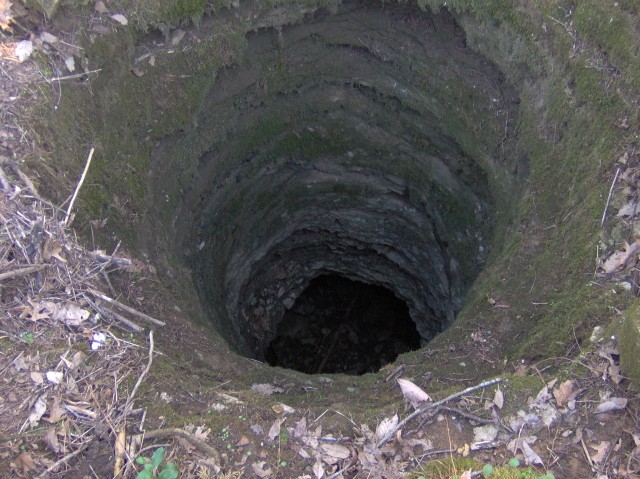A Sinkhole lot of Chemistry
 Wednesday, June 23, 2010 at 09:28AM
Wednesday, June 23, 2010 at 09:28AM  Sinkhole image by Brian StanberrySinkholes are in. There were reports of a massive one in Guatemala City a few weeks ago and now there are apparently dozens of them in China. Technically the hole in Guatamala City was not really a sinkhole, because it wasn’t made the right way. The “right way” involves a bit of chemistry.
Sinkhole image by Brian StanberrySinkholes are in. There were reports of a massive one in Guatemala City a few weeks ago and now there are apparently dozens of them in China. Technically the hole in Guatamala City was not really a sinkhole, because it wasn’t made the right way. The “right way” involves a bit of chemistry.
Sinkholes are made when sections of bedrock made of carbonate rocks (eg limestone and dolomite) are dissolved. When rainwater or ground water comes in contact with CO2, carbonic acid is formed, which can dissolve sections of bedrock, especially the weaker sections. The Hunan Province does have carbonate bedrock in some areas, but I’m not sure whether these areas are exactly where the sinkholes have been appearing. Once the bedrock becomes fractured, cavities can develop and it can collapse.
The hole in Guatemala City is a case of what geologists call “piping pseudokarst”. This involves the collapse of large cavities that in very weak, loose volcanic material, notably including pumice. In this particular case, the hole was probably caused (or at least exacerbated) by swift running water, brought by tropical storm Agatha.
The process of water coming in contact with CO2 to form carbonic acid is also one of the most worrying impacts of increased levels of CO2 in the atmosphere. CO2 from the atmosphere is absorbed by the ocean, forming carbonic acid. Now consider all the marine fauna who have carbonate structures, such as coral and anything with a shell. That’s probably another story though, but a very important one.
References (1)
-
 Response: pay someone to take your examA sinkhole is a downturn in the ground that has no regular outer surface seepage. Essentially, this implies that when it rains, all of the water stays inside the sinkhole and ordinarily depletes into the subsurface.
Response: pay someone to take your examA sinkhole is a downturn in the ground that has no regular outer surface seepage. Essentially, this implies that when it rains, all of the water stays inside the sinkhole and ordinarily depletes into the subsurface.

Reader Comments